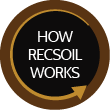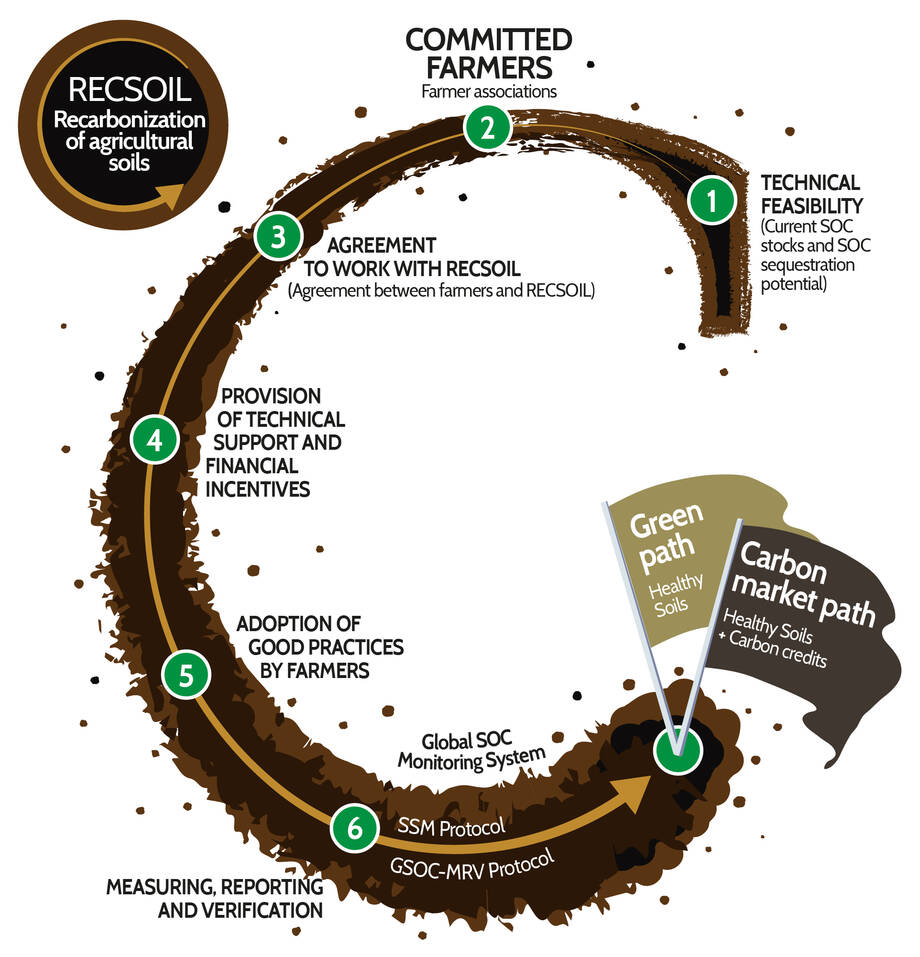RECSOIL: Recarbonization of Global Agricultural Soils
There is a collective call from all corners of the world to decarbonize the economy. Our response is to recarbonize global agricultural soils!
How does RECSOIL work?
The projects utilize the entire GSP toolbox to implement sustainable soil management practices in collaboration with local soil experts, stakeholders, and farmers in each project location.
Identify areas with high sequestration potential based on the Global Soil Carbon Sequestration map and other soil data available. Factors such as country readiness, availability of extension services, existing projects and national technical support are also considered.
Establishing collaborations and selecting a project location.
Establish collaboration with government and national technical support. Determine the project’s objective and budget, including identification of soil threats. Identify priority locations to implement RECSOIL based on multicriteria analysis, including land use and sequestration potential and socioeconomic parameters. Croplands and degraded soils are priority areas for the project’s implementation. Establish collaboration with farmers' associations, farmers and other local stakeholders. Formalize agreements between the Global Soil Partnership (GSP), project partners and local farmers.
Equipping project stakeholders with tools to implement the RECSOIL project.
Conduct base online training with national technical support on RECSOIL data requirements, collection, and soil sampling. National technical support will lead the day-to-day activities and onsite project steps. Identify and build capacity of local soil laboratories through GLOSLAN. Provide of technical support to farmers through the Global Soil Doctors Programme.
Finalize project areas and methods to quantify emissions after implementation.
Use spatial data analysis to determine final project areas, check land eligibility, and stratify areas to define soil sampling plan. Define additional monitoring strategies such as remote sensing Recruit field technicians and select final soil laboratories to conduct ongoing analysis.
Conduct necessary data collection and perform analysis to establish baseline scenario.
Collect detailed historical land use data, visual assessment, and laboratory analyses of current soil conditions. Based on data collected, quantify annual GHG emissions under current management, SOC stocks, and baseline soil health status. Identify suitable sustainable soil management (SSM) practices to implement based on collected data and in collaboration with local stakeholders.
Implementation of SSM through monitoring, measuring, and reporting (the first three years).
Participating farmers receive technical and financial support for adapting SSM to improve soil health and carbon stocks. Throughout the project period, changes in carbon, as well as general soil functions, are monitored and reported in accordance with the requirements of the chosen path.
Final soil assessment to measure, report, and verify changes in soil carbon stocks and ecosystem function.
To ensure environmental integrity, RECSOIL monitors fluxes in all greenhouse gases (GHGs), not just CO2. Productivity, biological activity, and bulk density are also essential parts of the soil assessment.
A RECSOIL project can choose one of two paths:
- The Green Path focuses on improving soil health and ecosystem services by implementing SSM.
- The Carbon Credit Path focuses on generating transferable carbon credits units to trade in the national and international carbon markets.
The main difference in implementing the two paths is related to sampling design. The projects must follow the GSOC-MRV to ensure statistically verifiable carbon numbers if it aims to create carbon credits. While baseline sampling is still crucial in the Green Path, the overall objective is to improve soil characteristics.
RECSOIL partners, including donors, decide whether to adopt the Green Path or the Carbon Credit Path. The RECSOIL tools are adapted to each location and the selected programme path.
Project implementation occurs in close collaboration between local stakeholders, the GSP Global Soil Doctors Programme and the GSP Global Soil Laboratory Network. The country driven approach stimulates local capacity building to ensure long-term sustainability and farmers’ livelihoods through increased system resilience.







